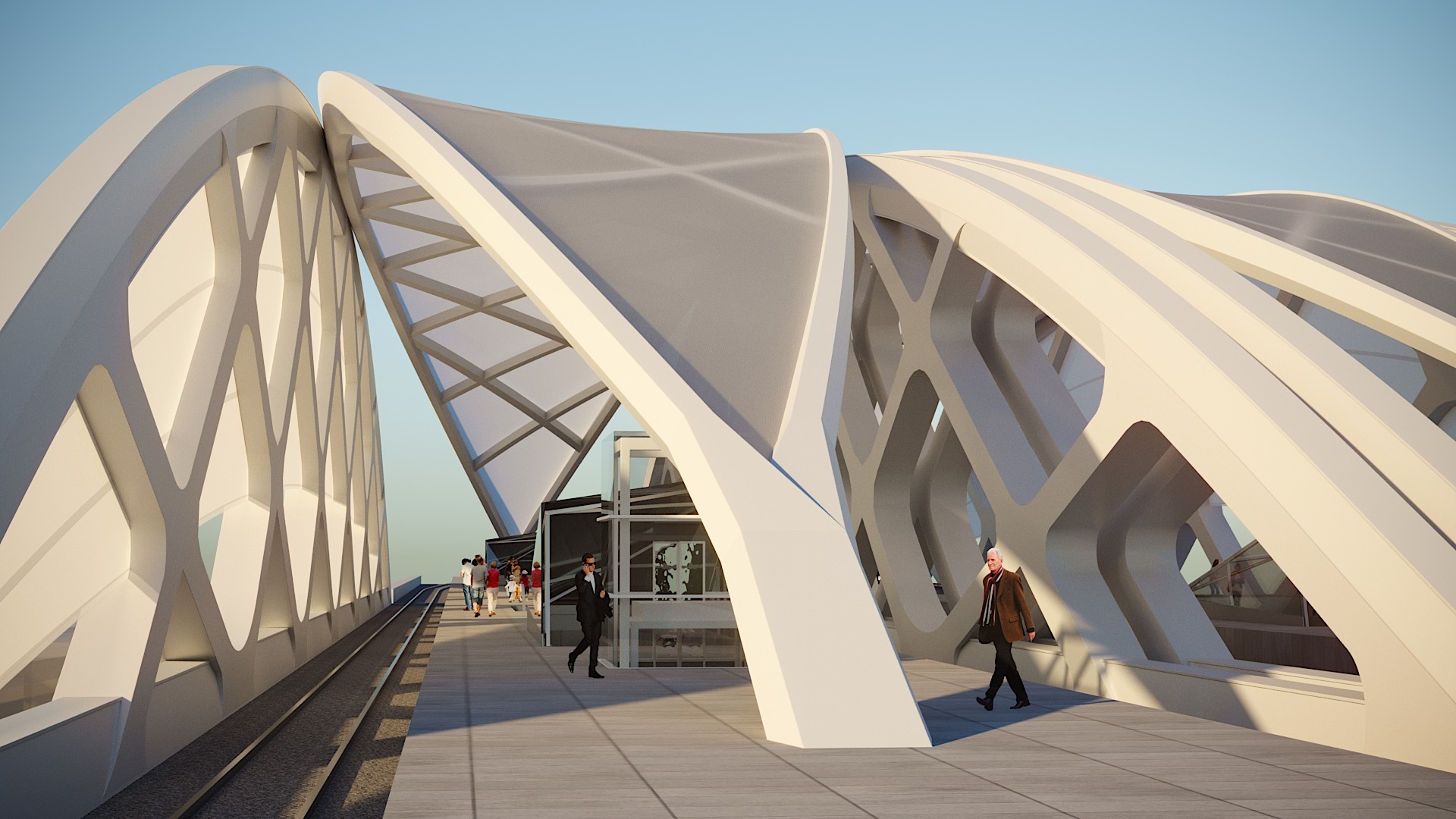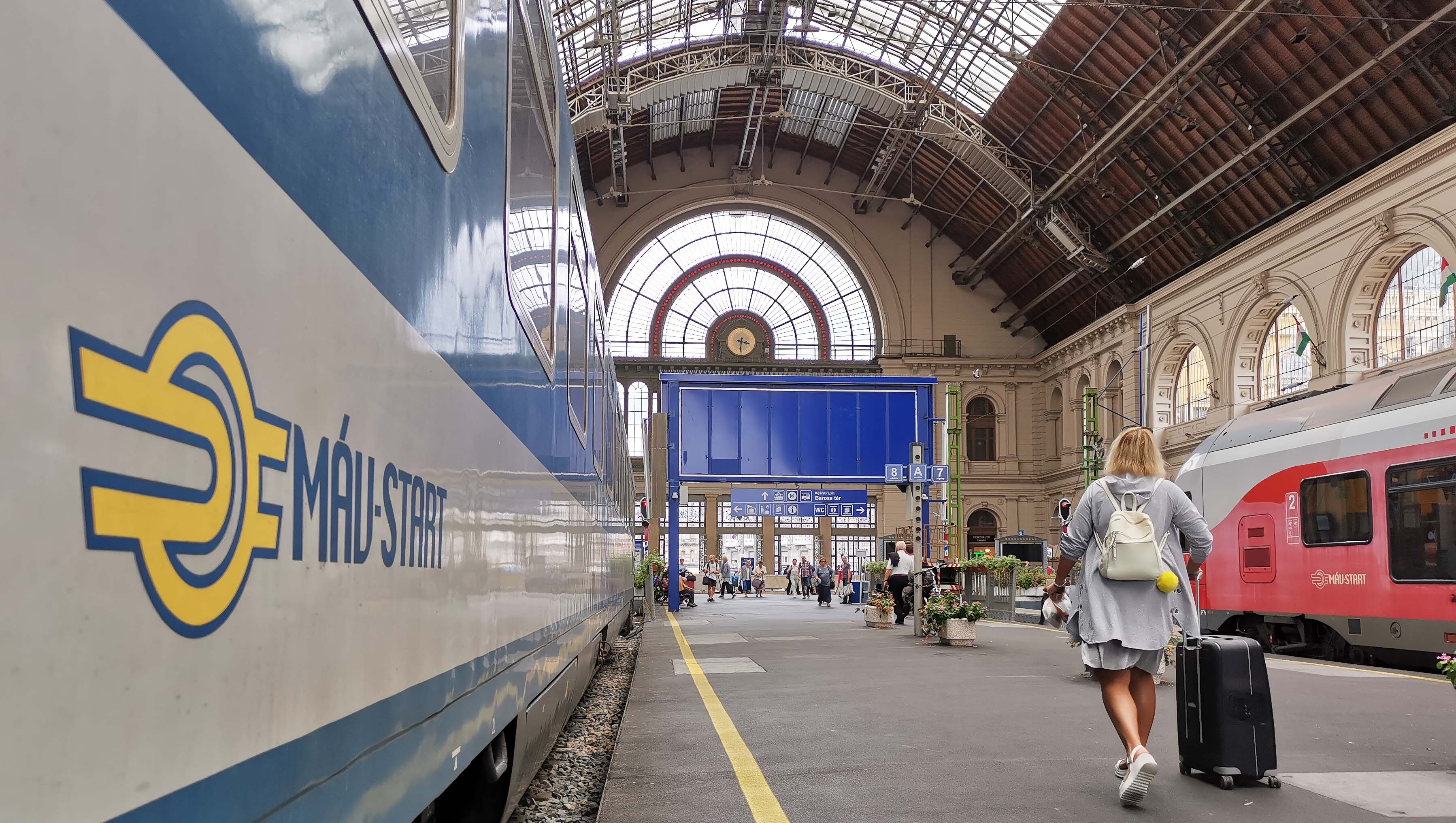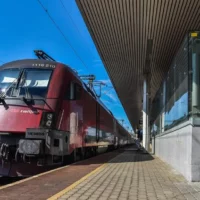Revolution in Budapest and its agglomeration’s public transportation?
Dávid Vitézy, the CEO of BFK, has emphasised that Budapest will only be livable if the suburban fixed-track lines, meaning the suburban railway and HÉV, become proper competitors against cars. In recent weeks, it seems that such developments are on the way, as there have been daily announcements about the launch of several developments.
The developments are collected by Portfolio. According to the Hungarian Central Statistical Office’s data, people in Budapest and its agglomeration have 1.25 million cars, and every third car enters the city. According to Dávid Vitézy, the quality of the air and the traffic in Budapest can only be improved by increasing the competitiveness of fixed-track lines, such as the railway and HÉV. This is the only way to reduce the number of cars in the city. It is estimated that the railway and HÉV developments around Budapest could reduce the number of commuters who use cars by 200,000.
Drivers are willing to switch if they have another viable choice as is evident from such lines in Székesfehérvár and Esztergom where the number of people who use them has doubled since the lines’ developments.
The current and planned developments therefore not only mean renovations but also the construction of new tracks, new stations, P+R parking lots, and direct connections to existing public transportation in Budapest. This means that an integrated development that treats the capital and its agglomeration as a unified transport system is needed, Vitézy emphasised.
Preparations are now starting on a total of three railway lines:
- The line from Budapest Nyugati Railway Station to Vác through Veresegyháza will be expanded to have two tracks instead of one, possibly increasing the total number of passengers from 10,000 to 30,000 a day.
- The Kőbánya Kispest-Gyál-Lajosmizse line is the last one that still uses diesel engines. We want to change that and have electric engines. We would also want to have trains going every fifteen minutes instead of once every hour, and we would like to increase their speed from 40 km/h to 80-100 km/h.
- On the Hatvan line, from the Keleti Railway Station to Rákosmente – which is currently the most used section in Budapest – a new track will be added, and several new stops will be built. These developments would be favourable for commuters from Szolnok, Újszász, Hatvan, and Pécel.
The developments in detail:
Budapest-Vác line
The complete renovation of the Budapest – Veresegyház – Vác railway line (number 71) will relieve traffic on the M3 motorway and M2 main road. On this line, there is currently a speed limit of 40-60 km/h, and trains only run on one track. We would like to expand this to two tracks so that the number of passengers could possibly even triple. This is a growing suburban zone.
The developments would make it possible for the trains to increase their speed to 80-100 km/h, the platforms at the stops would be accessible by wheelchairs, and new P+R and B+R parking lots would also be established. Trains could run from Vác to Veresegyház every 30 minutes, and from Veresegyház to Budapest every 15 minutes. In addition, 2 new stops would be established, one at the Marcheggi Bridge where there would be a transfer point at the junction of Vác, Veresegyház, Esztergom, and the outer railway lines. The other new stop would be built near Veresegyház called Medveotthon (Bear’s home).
The increase in the number of departing trains means that the capacity of the Nyugati Railway Station and the tracks leading to it also need upgrading as more suburban trains require larger head stations, or instead of a dead-end operation, it needs to change to the go-through operation. That is why the possibility of a railway tunnel under the Danube is entertained.
Budapest-Lajosmizse line
The complete renovation of the railway line between Budapest and Lajosmizse would be an alternative for commuters from Budapest’ District 18 (Pestszentimre), Gyál, Dabas, as well as for commuters from the agglomerations on the south of Pest.
On most of the lines, there is a speed limit of 40 km/h, the trains are carried by diesel engines, the stops are not accessible by wheelchair, and there are no parking lots and bicycle storage facilities. It is the only suburban railway line that has not been upgraded to have electric engines yet. The faster, denser timetable of S21 trains could also relieve traffic on the M5 motorway and the South Pest area. After the developments are complete, the number of passengers on the Lajosmizse line may increase 3-4 times compared to the current number. This requires departures every 10-15 minutes on the innermost section and every 30 minutes on the outer sections instead of the current system of departures every 60 minutes.
Budapest-Hatvan line
In the framework of the comprehensive development of the Budapest – Hatvan suburban railway line, more and more elements are approaching the finish line. The development is also important because it is in the area of the crowded and often jammed M3 motorway, and so the railway will become a more viable choice, and it could also contribute to decreasing the number of cars in Városliget (City Park). The aim is for trains to run more frequently and faster with the help of extra tracks. According to the plans, the stops of the suburban trains in Hatvan and Újszász (their current numbers: S60, S80, Z60, Z80) will also change:
- It is planned to relocate the Kőbánya upper stop to Élessarok.
- A new stop will be built at Hungária Boulevard. At the new stop, suburban trains (S60, Z60, S80, Z80) arriving from the Hatvan and Újszász-Szolnok lines will receive a new transfer connection to tram line 1.
- New stops are being built in District 17 in Budapest. The Akadémiaújtelep stop will be on the Hatvan line (already under construction), the Madárdomb and Strázsahegy stops will be built on the Újszász line (their planning is starting now, the feasibility and justification of Strázsahegy are still being examined during the planning).
- New P+R and B+R parking lots will be built along the line.
The renovation of the Aszód station is progressing well. The renovation of the Rákos – Hatvan line section is still ongoing, during which the Aszód station will also be renewed, but the train traffic is already continuous on the section between Pécel and Aszód.
Városliget (City Park)
Although the development of Városliget (City Park) is not a railway development, its impact is also reflected in the agglomerations’ traffic. Sixty years ago, the decision was made to lead the introductory section of the M3 motorway through the middle of the City Park. This has the effect that traffic on Kós Károly Promenade is the same as it is on Petőfi Bridge. In addition to the closure of the Kós Károly Promenade from car traffic, a new P+R parking lot with a total of 1,500 spaces will be built for car traffic coming from the M3 motorway at the junction of the M3 motorway entrance, Hungária Boulevard, and Mexikói Road at the ‘Kisföldalatti’ (metro line M1) terminus on Mexikói Road. This will make it much easier for those coming from the outer districts and the suburbs of North Pest to switch from car to underground, tram or trolleybus, or even railways in the future.
M5 metro
Dávid Vitézy said about the M5 metro project – connecting the suburban railways with the metro network – that the tenders for its plans had already been launched. The next step would be to replace the HÉV fleet in Szentendre, Csepel, and Ráckeve while developing the Southern Railway beltline. In the latter case, the connecting railway bridge must be renovated first, and a third track needs to be added. The first bridge structure can be lifted to place in October, followed by the building of new stops next to the Infopark, Művészetek Palotája (Müpa), and Népliget (People’s Park). The construction of the M5 metro line would increase the number of passengers on the southern HÉV lines from 47,000 to 104,000.
With the start of current and future developments, there is a chance that within a few years, a significantly higher number of people living in Budapest and its agglomeration will choose public transportation to get to the capital, which would greatly improve the air quality of Budapest.

Read alsoRailway development in Budapest: here are the two new stations

Read alsoSoon you can travel in new couchette cars on these Hungarian trains
Source: Portfolio.hu
please make a donation here
Hot news
What happened today in Hungary? — 25 April, 2024
Azerbaijan supplies gas to Hungary for the first time in history
Chinese President to visit Budapest: why is Xi coming to Hungary?
Breaking: Hungarian government to sue Spar
Attention: Budapest-Vienna railway line renovation continues in Hungary, timetable changes
Orbán: Make America Great Again! Make Europe Great Again!





4 Comments
Can someone tell me: why is this man making plans for Budapest? Nobody voted for this person. Shouldn’t all public transport projects be coordinated by the mayor of the city? Or is this BFK just another way of taking away tasks that naturally fall under the town hall and give them to a puppet so that the oligarchs close to the govt. can benefit from all the contracts to be signed which they probably wouldn’t get if it was up to the people of Budapes?
Good to read about potential upgrades to the transport system. Anything to get people out of their cars if they can conveniently access transport when they need to go but I for one moment don’t believe it will help air quality. That is just a delusional dream of people like Marxist Mario. I guess he doesn’t know about the ways electricity are generated. Its either fossil fuels or nuclear which is a gift that keeps giving for thousands of years.
A good start to improve air quality would be to speed up the replacement of the bus fleet with clean models. Ideally all diesel vehicles should be banned as well.
When you have lived in a State, a population of near 6 million people, in a country of a population of 26 million, that it is blatantly obvious, that over decades, the Governments have predominantly “poured” excessive funding into providing better road highway facilities that ALL have backfired, articles as this are refreshing and stimulating.
There failure, not to inject level funding into public rail or other public transport services, finds that state’s roads and public transport services in shambles.
This state has for over the past decade experienced population growth of in excess of 2%.
Population density of Budapest compared to Melbourne, Victoria in the “land down under” Australia, is vastly different.
It is totally a “choked” city in it’s facilities of people movement by vehicles or public transport.
Through neglect of Governments, over decades, it finds itself today projects in place and under constructions costing billions of dollars, playing a catch up game, that will still see it in 3-5 years time, when they are planed for completion, not in line nor up to date with modern growing developing cities, in there public road and public transport services.
Continuous in Governments time in office, must be attention paid to lessen car and transport movement in there cities and country, lessening levels of emission high levels produced by motor and transport vehicles, that see’s us living, and future generations, living in a clearer and cleaner global environment.
To read of Governments, like this article makes reference, of vehicle and transport working together, but a greater deeper emphasis placed of the importance on public transport, meets with my total unequivocal support.
Stay Well – ALL.